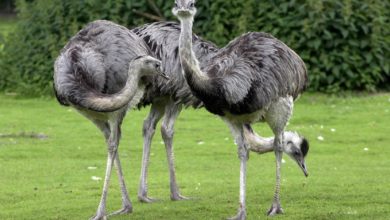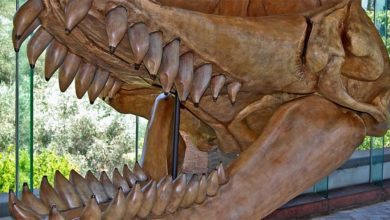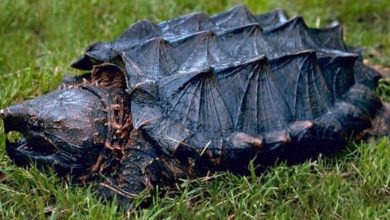History of animals and plants extinction
History of extinction of animal and plant species
Timeline of animal and plant extinction
The history of the Earth is inseparably connected with the extinction of animal and plant species. We had no influence on many of them as human beings, because just like dinosaurs, they were extinct before humans appeared on the Blue Planet. However, many animal species have disappeared from the Earth’s surface as a result of human activity.
Today we present you the most complete list of extinct species over the centuries. We have included this summary in the form of a calendar, a timeline. The resulting list will show how many species have gone extinct over the centuries.
A journey through 120 centuries of history
Today, we take you on a journey for 12,000 years to trace the extinction of species. We go back to the 10th millennium BC to reach 2018 AD.
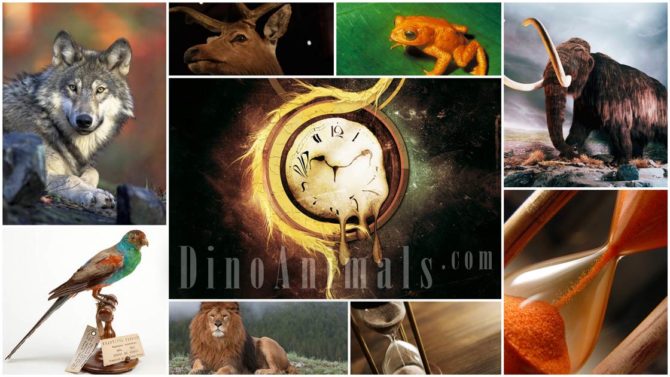
History of the extinction of animal and plant species from 10,000 BC to 2018 AD
10th millennium BCE
- 9950 BCE – Cuvieronius humboldti survived in Chile until about this time.
- 9940 BCE – Fratercula dowi survived in the Channel Islands until about this time.
- 9680 BCE – Euceratherium collinum survived in Utah until about this time.
- 9650 BCE – Arctotherium tarijense survived in Uruguay until about this time.
- 9530 BCE – The short-faced bear Arctodus simus survived in Ohio until about this time.
- 9400 BCE – The Corsican and Sardinian canid Cynotherium sardous survived until about this time.
- 9390 BCE – Eremotherium laurillardi survived in Brazil until about this time.
- 9380 BCE – Stockoceros survived in New Mexico until about this time. Equus conversidens survived in Alberta until about this time.
- 9220 BCE – The pronghorn Capromeryx survived in New Mexico until about this time. Equus scotti survived until about this time.
- 9180 BCE – Bison antiquus survived in Alberta until about this time.
- 9150 BCE – The woodland musk ox Symbos survived in Michigan until about this time.
- 9135 BCE – Panthera onca mesembrina survived until about this time.
- 9110 BCE – The flat-headed peccary Platygonus compressus survived in Ohio until about this time.
- 9090 BCE – Scelidotherium and Stegomastodon survived in Brazil until about this time.
- 9080 BCE – The pygmy mammoth survived on Santa Rosa Island, California until about this time.
- 9030 BCE – Bootherium bombifrons survived in Alberta until about this time.
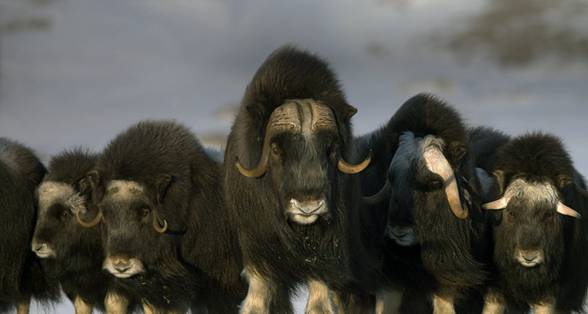
9th millennium BCE
- 8920 BCE – Oreamnos harringtoni survived in Arizona until about this time.
- 8735 BCE – Hippidion saldiasi survived in Chile until about this time.
- 8445 BCE – The mastodont Mammut survived in Michigan until about this time.
- 8420 BCE – Martes nobilis and Panthera leo atrox survived until about this time.
- 8280 BCE – The giant beaver Castoroides and the stag-moose Cervalces survived in Ohio until about this time.
- 8240 BCE – Equus neogeus, Glyptodon, and Toxodon survived in Argentina until about this time.

8th millennium BCE
- 7930 BCE – The pampathere Holmesina survived in Florida until about this time, as did Glossotherium. Tapirus veroensis and Palaeolama mirifica survived until about this time.
- 7890 BCE – Mummified skin associated with the sloth Nothrotheriops shastensis indicates that the species may have survived in New Mexico until about this time.
- 7630 BCE – The sloth Catonyx cuvieri survived in Brazil until about this time.
- 7490 BCE – Megalonyx jeffersonii survived until about this time.
- 7490 BCE – The stilt-legged deer Sangamona survived in Missouri until about this time.
- 7470 BCE – The Cyprus dwarf elephant became extinct around this time.
- 7460 BCE – The peccary Mylohyus survived in Tennessee until about this time. Smilodon fatalis survived until about this time.
- 7450 BCE – The dire wolf Canis dirus survived in Missouri until about this time. Its extinction was probably caused by competition with Canis lupus, the extant gray wolf.
- 7290 BCE – The Cyprus dwarf hippopotamus became extinct at about this time.
- 7180 BCE – Smilodon populator survived in Brazil until about this time.
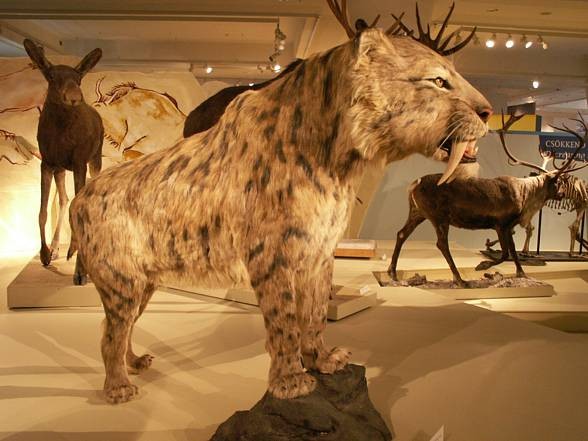
7th millennium BCE
- 6960 BCE – Scelidodon chiliensis survived in Peru until about this time.
- 6910 BCE – The primitive bison survived in the Taymyr Peninsula until this time.
- 6730 BCE – Mammuthus columbi survived in Saskatchewan until about this time. Equus santaelenae survived in Ecuador until about this time.
- 6720 BCE – Ochotona whartoni survived in eastern North America until about this time.
- 6689 BCE – Mylodon survived in Chile until about this time.
- 6577 BCE – Hemiauchenia survived in Nevada until about this time.
- 6290 BCE – The camel Camelops survived in Arizona until about this time.
- 6275 BCE – Bubo insularis survived until about this time.
- 6050 BCE – Megalotragus priscus survived in South Africa until about this time.
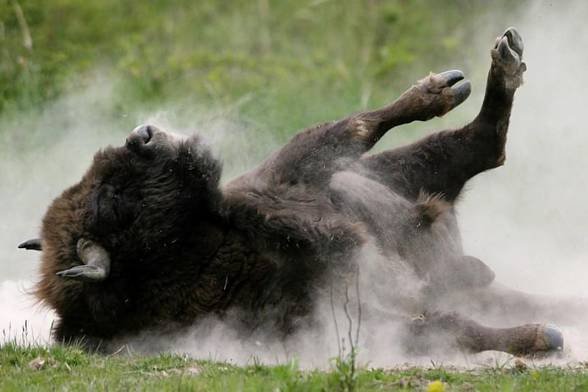
6th millennium BCE
- 5914 BCE – The Cuban pauraque survived until about this time.
- 5620 BCE – Antidorcas bondi survived in South Africa until about this time.
- 5370 BCE – Megatherium americanum survived in Argentina until about this time.
- 5020 BCE – The Sardinian giant deer Praemegaceros cazioti survived until about this time.
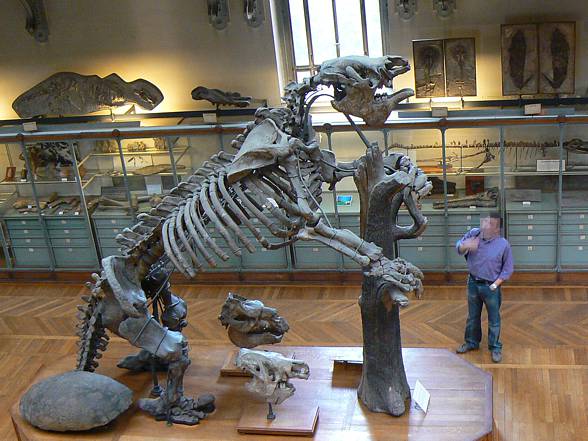
5th millennium BCE
- 4950 BCE – Dactylopsila kambuaya and Petauroides ayamaruensis survived in New Guinea until about this time.
- 4866 BCE – Irish elk survived in the Urals and western Siberia until this time.
- 4605 BCE – The glyptodont Doedicurus clavicaudatus survived in Argentina until about this time.
- 4180 BCE – Rallus eivissensis survived on Ibiza until about this time.
4th millennium BCE
- 3010 BCE – The sloth Parocnus browni survived in Cuba until about this time.
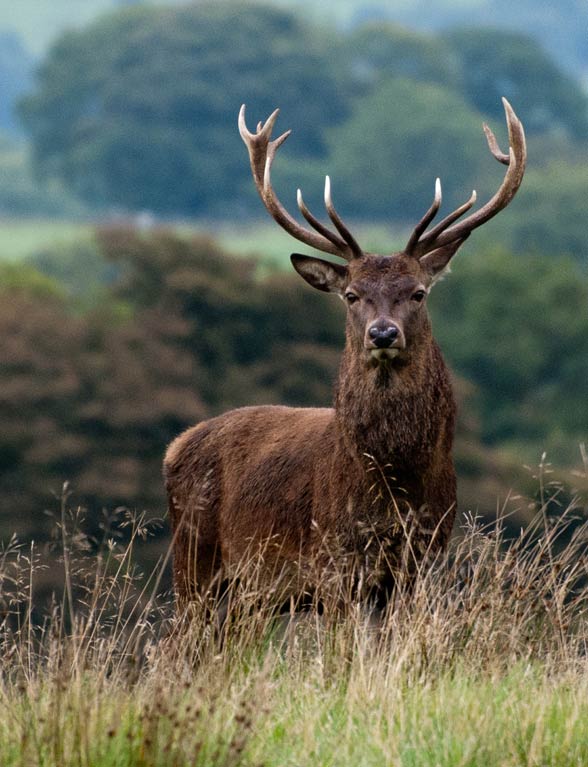
3rd millennium BCE
- 2915 BCE – The canid Dusicyon avus survived in Argentina until about this time.
- 2835 BCE – The Balearic cave goat became extinct around this time.
- 2765 BCE – The North African buffalo Pelorovis antiquus survived until about this time. Its extinction may have been caused by competition for food and water with domestic cattle.
- 2550 BCE – The Bennu heron became extinct around this time, possibly due to degradation of its wetland habitat. It was last recorded in the Arabian Peninsula.
- 2441 BCE – The sloth Neocnus comes survived in Haiti until about this time.
- 2240 BCE – The sloth Megalocnus rodens and the Cuban cave rail survived in Cuba until about this time.
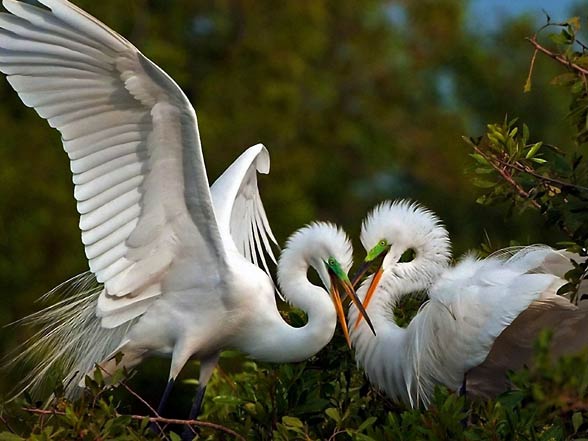
2nd millennium BCE
- 1900 BCE – Antillothrix bernensis survived on Hispaniola until about this time.
- 1780 BCE – The last known population of woolly mammoths on Wrangel Island died out, possibly due to a combination of climate change and hunting.
- 1520 BCE – The giant flightless megapode survived on New Caledonia until about this time.
- 1380 BCE – Acratocnus odontrigonus, formerly inhabiting Puerto Rico and Antigua, survived until about this time.
- 1300 BCE – Thylogale christenseni survived in New Guinea until about this time.

1st millennium BCE
- 790 BCE – Megapodius alimentum survived on Tonga until about this time.
- 530 BCE – Microgale macpheei survived in Madagascar until about this time.
- 457 BCE – The rodent Elasmodontomys obliquus survived in Puerto Rico until about this time.
- 450 BCE – Crocidura balsamifera survived in Egypt until about this time.
- 341 BCE – Archaeoindris fontoynonti survived in Madagascar until about this time.
- 195 BCE – Xenothrix mcgregori survived until about this time.
- 110 BCE – Archaeolemur edwardsi survived in Madagascar until about this time.
- 100 BCE – Syrian elephant becomes extinct due to overhunting for ivory.
- 30 BCE – Coua primaeva survived in Madagascar until about this time.

1st millennium CE
2nd century
- 100 – The Maui highland apteribis survived on Maui until around this time.
3rd century
- 200 – The coastal kagu, Kanaka pigeon, New Caledonian gallinule, pile-builder megapode, and powerful goshawk survived until around this time.
- 256 – Mesopropithecus globiceps survived in Madagascar until about this time.
5th century
- 450 – The turtle genus Meiolania survived until this time on New Caledonia.
6th century
- 537 – Hadropithecus stenognathus survived in Madagascar until about this time.
- 540 – Mesopropithecus pithecoides survived in Madagascar until about this time.
- 570 – Alopochen sirabensis survived in Madagascar until around this time.
7th century
- 685 – The lava shearwater survived until around this time.
8th century
- 730 – Pachylemur insignis survived in Madagascar until about this time.
- 731 – The rodent Heteropsomys insulans survived in Puerto Rico until about this time.
9th century
- 836 – The coastal moa survived in New Zealand until about this time.
- 885 – Daubentonia robusta survived in Madagascar until about this time.
10th century
- 900 – The nene-nui survived on Maui until around this time.
- 915 – Plesiorycteropus survived in Madagascar until about this time.
- 950 – Sinoto’s lorikeet and the conquered lorikeet survived until about this time.
- 996 – The New Zealand owlet-nightjar survived until about this time.
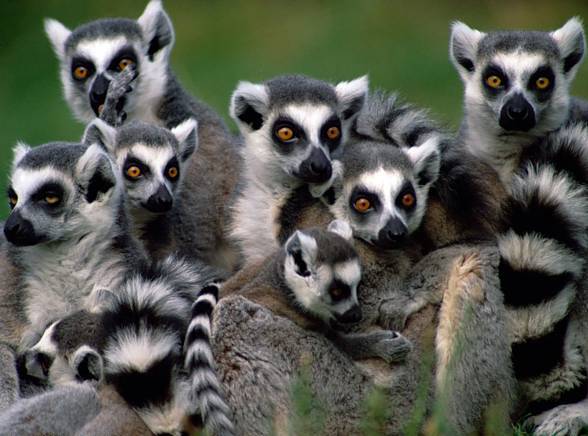
2nd millennium CE
12th century
- 1180 – The Maui Nui moa-nalo survived until around this time. The moa-nalo were large ducks and the Hawaiian Islands’ major herbivores.
- 1190 – The Hunter Island penguin survived until around this time.
14th century
- 1320 – The lemur Megaladapis edwardsi survived in Madagascar until about this time.
- 1322 – The upland moa survived on South Island until around this time.
- 1326 – Mantell’s moa survived on North Island until around this time.
- 1360 – Nesophontes survived in Cuba until around this time.

15th century
- 1400 – New Zealand’s Haast’s eagle, a giant bird of prey, becomes extinct. The eagle’s main prey were various species of moa, which also went extinct.
- 1420 – The South Island giant moa survived on South Island until around this time.
- 1440 – The lemur Palaeopropithecus ingens survived in Madagascar until about this time.
- The moas of New Zealand became extinct, probably due to hunting.
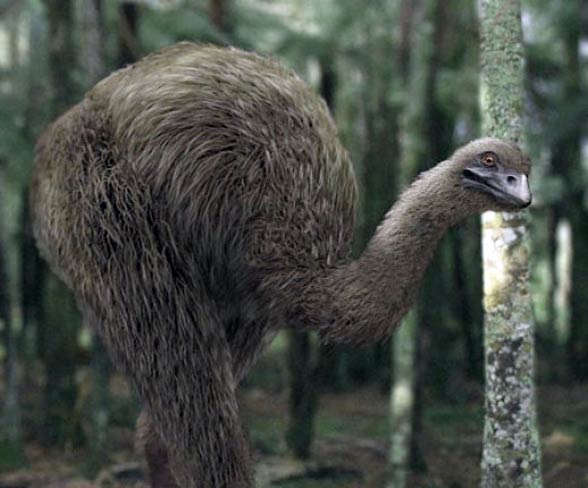
16th century
- 1500-1550 – The Waitaha penguin of South Island became extinct.
17th century
- 1627 – The last known aurochs died in Poland. This large wild cattle formerly inhabited much of Europe, northern Africa, the Middle East, Central Asia, and India.
- 1645 – Finsch’s duck survived in New Zealand until around this time.
- 1662 – The last definite sighting of a dodo was made in Mauritius. The extinction was due to hunting, but also by the pigs, rats, dogs and cats brought to the island by settlers. The species has become an iconic symbol of animal extinction.
- The elephant bird Aepyornis maximus was last recorded around the end of the 17th century.
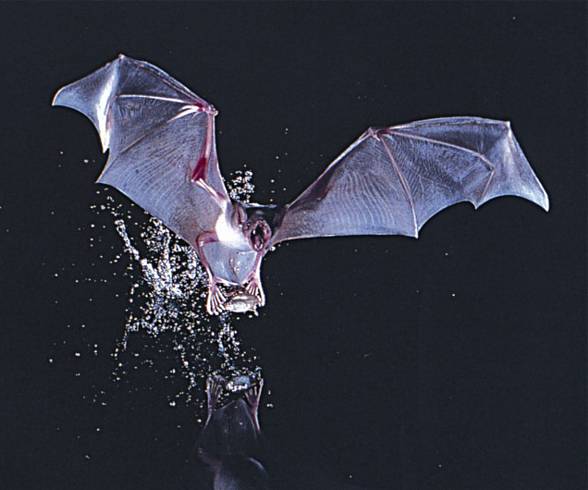
18th century
- 1768 – Steller’s sea cow became extinct due to overhunting for meat and leather.
- 1773 – The Tahiti sandpiper died out after rats were introduced to its habitat in the Society Islands.
- 1774 – The Sardinian pika became extinct due to invasive species (foxes, cats, etc.) that were introduced to Sardinia and Corsica.
- 1777 – The Society parakeet population dies out on the Society Islands after vessels released pests.
- 1790 – The Lord Howe swamphen, also known as the white gallinule, becomes extinct.
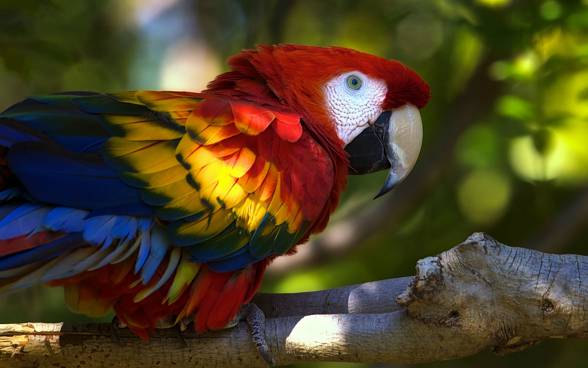
19th century
- 1800 – The last known bluebuck was shot, making the species the first African antelope to be hunted to extinction by European settlers.
- 1825 – The mysterious starling died out.
- 1826 – The Mauritius blue pigeon becomes extinct due to excessive hunting.
- 1827 – The Tonga ground skink dies out from its only home in the Tongan Islands.
- 1852 – The last sighting of a great auk was made off the coast of Newfoundland. The bird was driven to extinction by hunting for its fat, feathers, meat, and oil.
- 1860 – The string tree from the island of St Helena becomes extinct because of habitat destruction.
- 1860 – The sea mink becomes extinct because of hunting for its fur.
- 1875 – The broad-faced potoroo was last recorded.
- 1876 – The Falkland Islands wolf became extinct.
- 1878 – Labrador duck declared extinct after last appearances in Long Island three years earlier.
- 1879 – The last known Atlas bear, Africa’s only native bear, is killed by hunters in Morocco. The bear was heavily hunted and used for sport in the Roman Empire.
- 1880 – The eastern elk, a subspecies of elk in the US and Canada, is declared extinct.
- 1883 – The Quagga, a sub-species of the plains zebra, goes extinct.
- 1886 – The red alga known as Bennett’s seaweed from Australia disappears because of the massive human activities.
- 1889 – The last Hokkaido wolf dies from poisoning campaign.
- 1890 – The eastern hare-wallaby was last recorded.
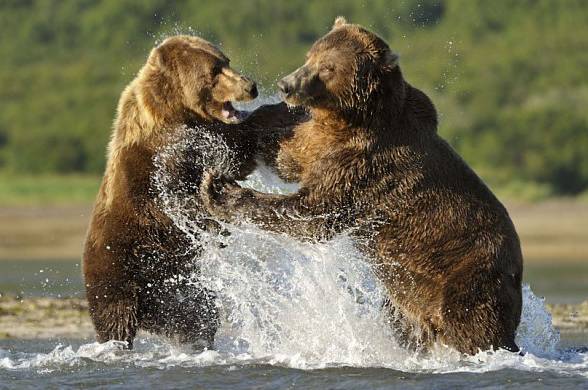
20th century
1900s
- 1902 – The last known specimens of the Rocky Mountain locust are collected near Brandon, Manitoba.
- 1905 – The last known Honshū wolf of Japan dies in Nara Prefecture.
- 1907 – The huia, a native bird of New Zealand, is last seen. Habitat loss, hunting, and disease all played a role in its extinction.
- 1909 – The last known tarpan, a Polish wild horse, died in captivity.
1910s
- 1911 – The last Newfoundland wolf was shot.
- 1914 – The last passenger pigeon, Martha, died in captivity at the Cincinnati Zoo. Excessive hunting contributed to its extinction; it was formerly one of the world’s most abundant birds.
- 1918 – The last Carolina parakeet died in captivity at the Cincinnati Zoo. The bird, formerly inhabiting the southeastern United States, was driven to extinction by exploitation, deforestation, and competition with introduced bees.
1920s
- 1924 – The California grizzly bear is sighted for the last time.
- 1925 – The Kenai Peninsula wolf was driven to extinction.
- 1929 – Acalypha wilderi was last seen in the wild. This species may be synonymous with A. raivavensis and A. tubuaiensis, which would mean it is in fact not extinct globally.
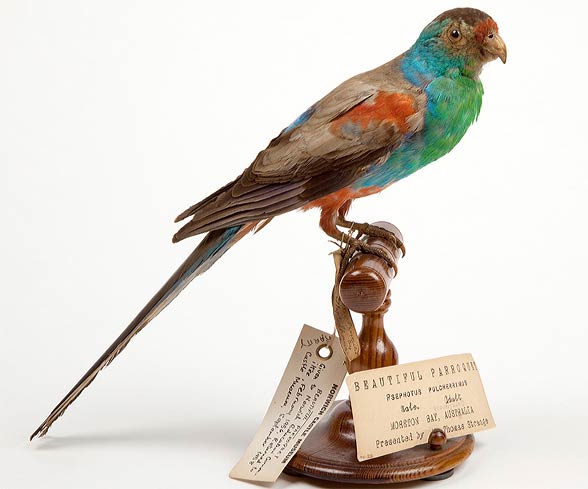
1930s
- 1930 – Darwin’s rice rat was last recorded in the Galápagos Islands. Its extinction was probably caused by the introduction of black rats.
- 1932 – “Booming Ben”, the last known heath hen was seen on Martha’s Vineyard, Massachusetts.
- 1933 – The cry pansy from Europe becomes extinct due to habitat loss and overcollection in the only place where it grew, France.
- 1934 – The indefatigable Galapagos mouse was last recorded. Its extinction was probably caused by the introduction of black rats.
- 1935 – The desert rat-kangaroo was last recorded.
- 1935 – The Mogollon mountain wolf and the Southern Rocky Mountains wolf were hunted to extinction.
- 1936 – The last thylacine died in captivity. Hunting, habitat loss, disease, and competition from domestic dogs all may have contributed to the extinction of the species.
- 1937 – The Bali tiger was last definitively seen around this time, but likely persisted into the 1940s or possibly even the early 1950s.
- 1939 – The toolache wallaby was last recorded.
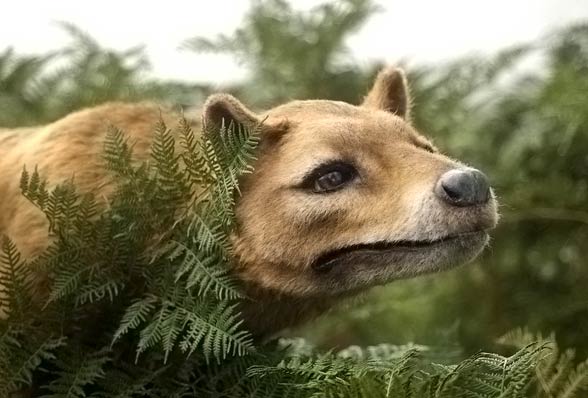
1940s
- 1940 – The Cascade mountain wolf was hunted to extinction.
- 1942 – The Texas wolf was purposefully driven to extinction.
- 1942 – The last confirmed sighting of the Barbary lion, although unconfirmed reports surfaced until 1970.
1950s
- 1952 – Last reliable report of the Caribbean monk seal.
- 1952 – The Bernard’s wolf was hunted to extinction.
- 1956 – The crescent nail-tail wallaby and imperial woodpecker were last recorded.
- 1957 – The Scioto madtom, a species of fish, is last collected.
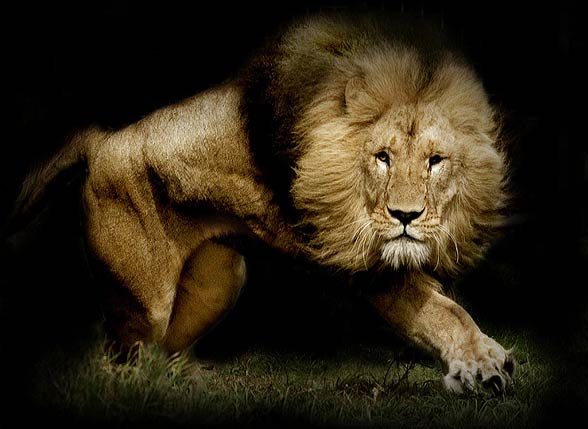
1960s
- 1960 – The Mexican grizzly bear was exterminated around this time.
- 1962 – The red-bellied gracile opossum was last recorded in Argentina.
- 1964 – The Hawaii chaff flower of the Hawaiian islands becomes extinct because of habitat loss.
- 1965 – Last sighting of the turgid-blossom pearly mussel, an American mussel.
- 1966 – The last Arabian ostrich died around this time.
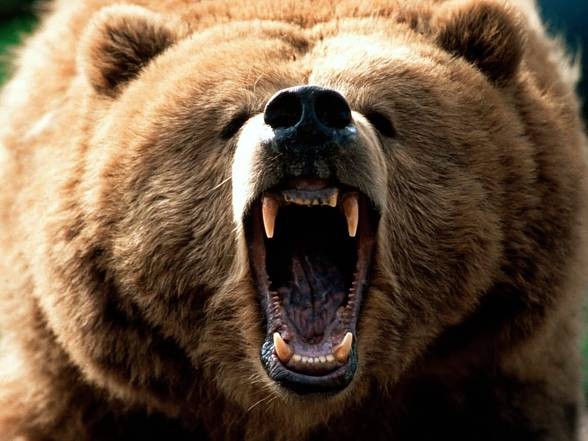
1970s
- 1970 – The Caspian tiger becomes extinct primarily due to habitat loss, hunting, and loss of prey.
- 1972 – The endemic to Jamaica Mason River myrtle becomes extinct.
- 1974 – The last known Japanese sea lion is captured off the coast of Rebun Island, Hokkaido.
- 1976 – Last sightings of the Javan tiger.
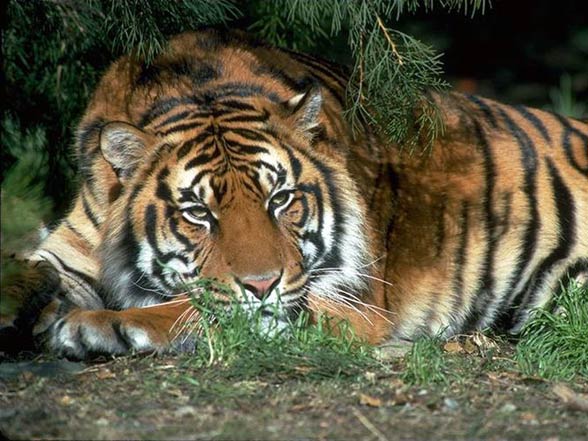
1980s
- 1981 – The Puhielelu hibiscadelphus becomes extinct.
- 1981 – Last sighting of the green-blossom pearly mussel, an American mussel.
- 1981 – The Southern gastric-brooding frog (Rheobatrachus silus) became extinct probably due to habitat destruction and disease.
- 1983 – Last unconfirmed spotting of the kouprey (Bos sauveli), last absolute confirmed spotting was in 1969/70. Declared as “most likely to be extinct” by the IUCN.
- 1983-84 – The 24-rayed sunstar (Heliaster solaris), the Galapagos black-spotted damselfish and the Galapagos stringweed likely become extinct due to climate change.
- 1985 – The Northern gastric-brooding frog (Rheobatrachus vitellinus) became extinct probably due to habitat destruction and disease.
- 1987 – The last Kauaʻi ʻōʻō (Moho braccatus), a male, is recorded singing a mating call. The species was never heard from again and was declared extinct.
- 1989 – The golden toad of Costa Rica becomes extinct, perhaps because of climate change.

1990s
- 1990 – The dusky seaside sparrow was officially declared extinct in December 1990. The last definite known individual died on 17 June 1987.
- 1994 – Saint Croix racer, a snake native to the Virgin Islands, declared extinct.
- 1994 – Levuana moth from Hawaii goes extinct.
- 1997 – The Hainan ormosia (a species of legume) which was native to China is no longer seen.
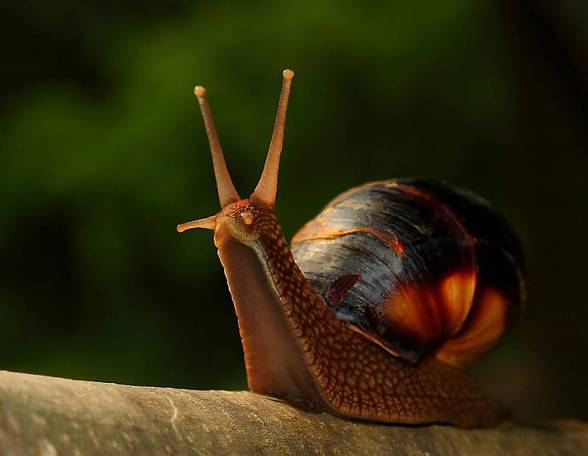
3rd millennium CE
21st century
2000s
- 2000 – “Celia”, the last Pyrenean ibex, was found dead in 2000. However, in 2003, a female was cloned back into existence, but died shortly after birth due to defects in the lungs.
- 2003 – The last individual from the St. Helena olive, which was grown in cultivation, dies off. The last plant in the wild had died in 1994.
- 2006 – A technologically sophisticated survey of the Yangtze River failed to find specimens of the baiji dolphin, prompting scientists to declare it functionally extinct.
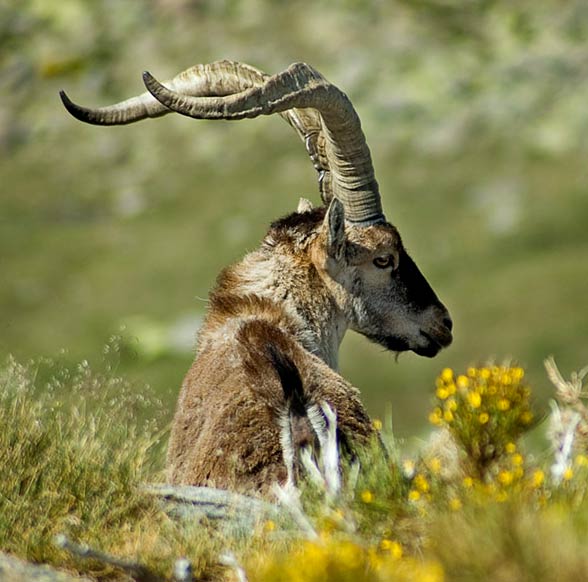
2010s
- 2011 – The Eastern cougar was declared extinct. The last known individual was trapped and killed in 1938. However, recent research suggests that the Eastern cougar was not a distinct subspecies from other North American subspecies of cougars. This research has suggested that there is only one subspecies, the North American cougar.
- 2011 – The western black rhinoceros was declared extinct.
- 2012 – The Japanese river otter (Lutra lutra whiteneyi) declared extinct by the country’s Ministry of the Environment, after not being seen for more than 30 years.
- 2012 – “Lonesome George”, the last known specimen of the Pinta Island tortoise, died on 24 June 2012.
- 2013 – The Cape Verde giant skink was declared extinct.
- 2013 – The Formosan clouded leopard, previously endemic to the island of Taiwan, is officially declared extinct.
- 2014 – The Bermuda saw-whet owl was declared extinct after being described from fossils in 2012.
- 2017 – The Christmas Island forest skink was declared extinct, three years after the last known specimen died.
- 2016 – The Bramble Cay melomys was declared extinct.
- 2018 – The last male Northern White Rhino died in captivity driving the species into certain extinction.
- 2019 – The Bramble Cay melomys was declared extinct.
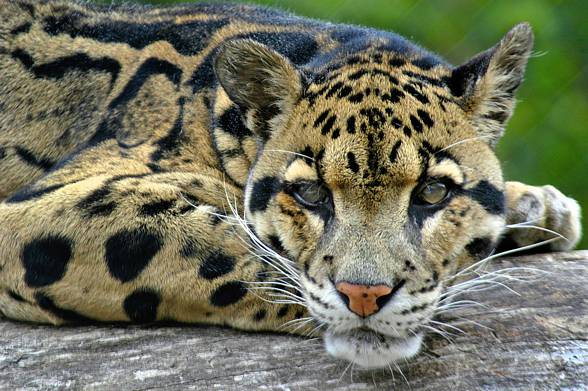
The list is based on http://dinoanimals.pl/zwierzeta/historia-wymierania-gatunkow-zwierzat-roslin/ and Wikipedia.









